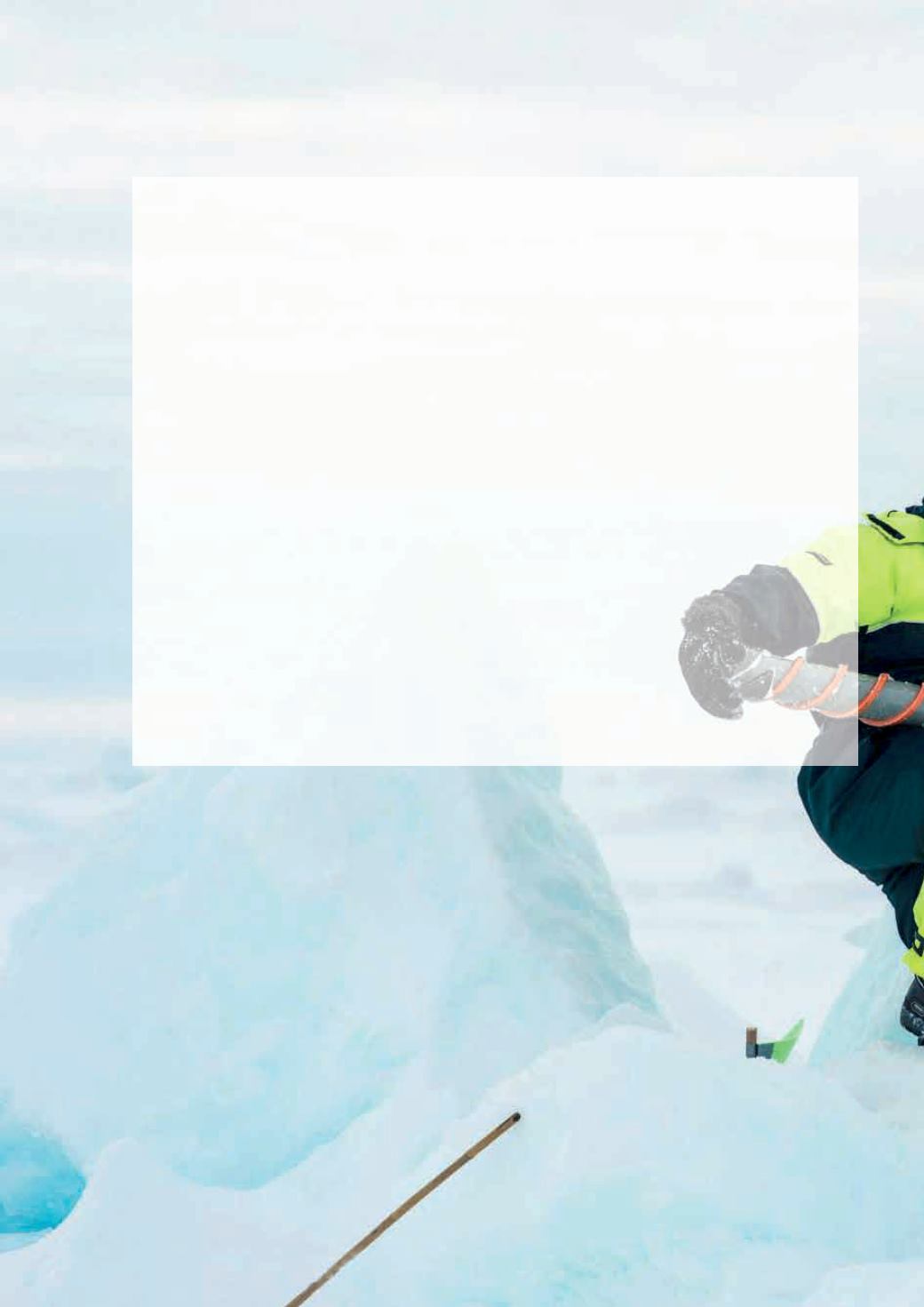

34
SAMC
o
T
• ANNUAL REPORT 2015
In the spring of 2015 SAMCoT`s WP3 and WP1 collaborated on a field work activity on
properties of decaying first year ice ridges, lead and carried out by Post-doc Aleksey
Shestov and Phd Candidate
ÅSE ERVIK
.
During the N-ICE 2015 cruise, funded by the Norwegian Polar Institute, the Fram Centre,
and the Norwegian Ministry of Climate and Environment, the Lance was frozen into the
Arctic ice for six months so that scientists could study ice conditions from winter’s deep
freeze to spring breakup – a cradle-to-grave approach. Researchers spent as long as 6
weeks on the ship, studying everything from the tiny plankton and alga in the Arctic Ocean
to turbulent mixing in the waters under the winter ice.
Ervik, on the right in the photo, would spend Each day, between 12 to 15 hours out on the
two ice ridges that she selected for study, drilling holes and measuring something called
porosity, or the gaps between big blocks of ice at the bottom of an ice ridge. She also
tested the sonar equipment to see how it would work to provide 3-D images of the ice
ridge, and participated in the testing of a geomagnetic measurement device (GEM) that
hopefully can produce 3-D images of the porosity of the ice ridges in the future.
An ice ridge may sound like a simple structure, but it is anything but. The top layer is
called the consolidated layer, which is frozen fairly solid. Underneath is the rubble, which
is what exactly it sounds like: different-sized ice chunks frozen together in a crazy mix.
There can be holes between the chunks – which are measured as porosity. Ervik worked
with a Finnish PhD student, Annu Oikkonen; both researchers were always watched over
by a polar bear guard.
Photo: Frede Lamo
















